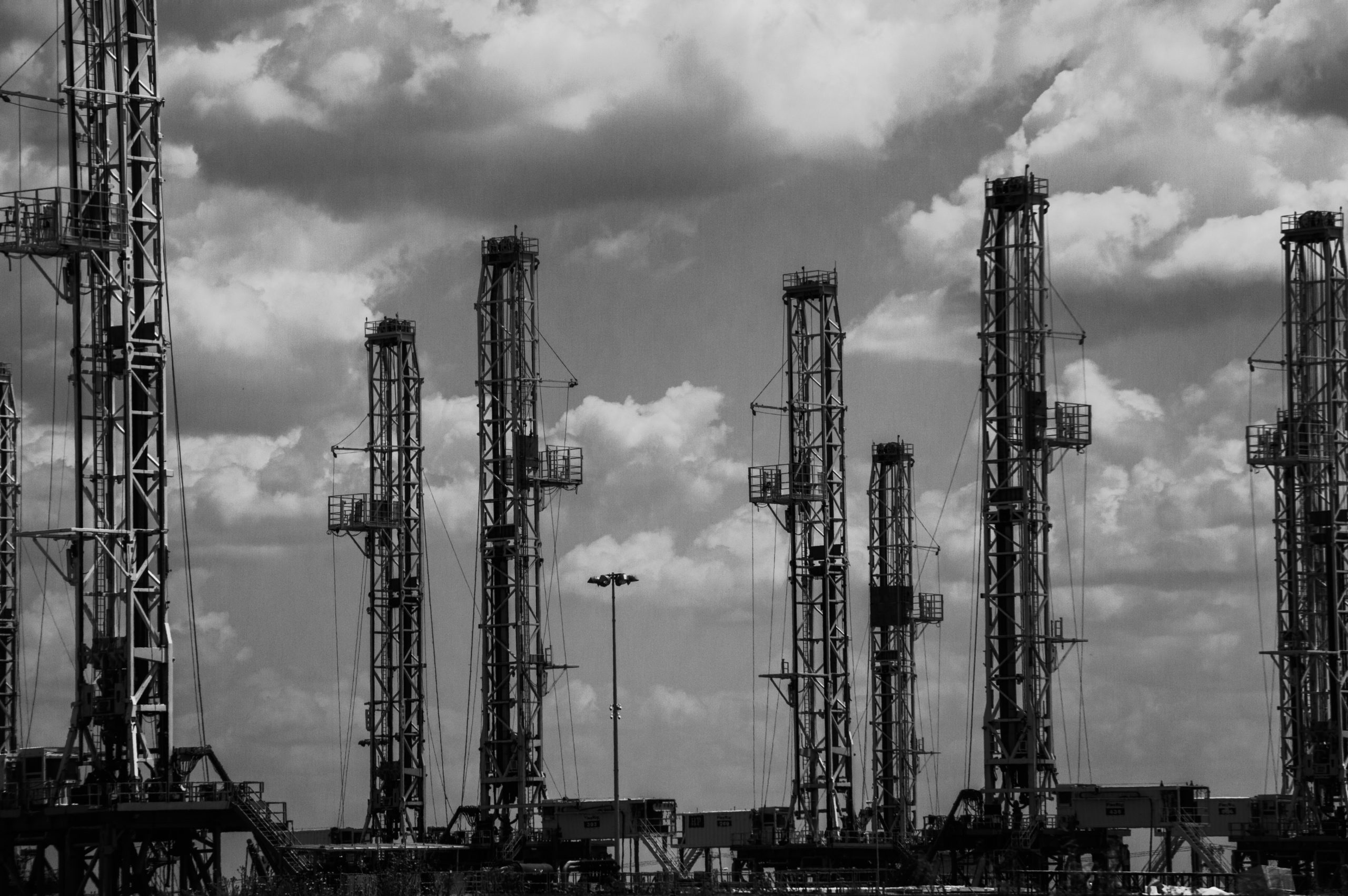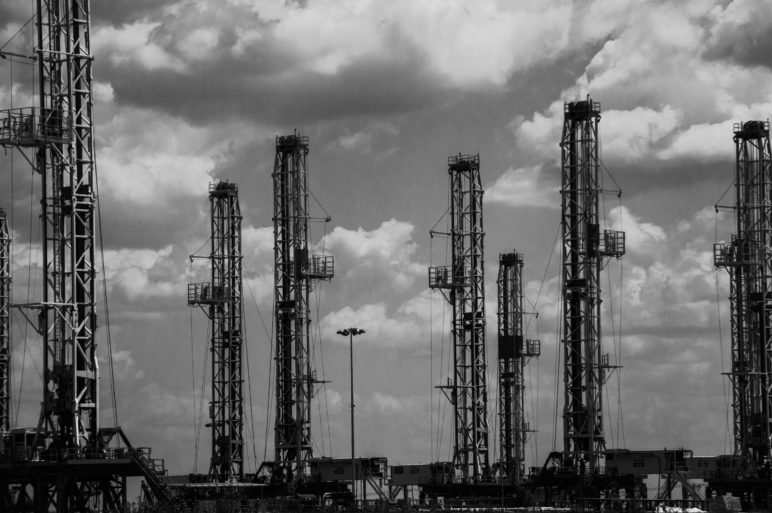The fossil fuel industry operates with a tremendous amount of risk on its hands—risks that, unfortunately, often materialize and then fall on the public to pay. An unpleasant trip down memory lane reminds us of some of the Northwest’s expensive dirty energy accidents: the 1989 Exxon Valdez oil spill, the 2016 oil train derailment in Mosier, Oregon, and the 2017 gas pipeline explosion in Seattle’s Greenwood neighborhood. These are just a few of the mishaps that came with a cost above and beyond what the industry’s checkbook covered.
It might seem logical that polluters would be expected pay for the damage they cause, but that is not always the case. Too often taxpayers are the ones who foot the bill for an accident while the company that caused it attempts to shirk responsibility by declaring bankruptcy or stalling with litigation. Under current laws, the public cannot count on the industry to cover the financial impacts of fossil fuel pollution or remediation (to say nothing of assuming liability for its role in climate change).
But what if fossil fuel companies had to pre-pay for their risks and future liabilities before they could even operate? Pre-payment might be the answer to bringing accountability to the industry or at least revealing that a business’s operations don’t actually pencil out the way the company claims it does.
An old idea, reinvented
State and local governments already have at their disposal a set of tried-and-true tools—bonding, insurance, letters of credit, corporate guarantees, and surcharge-based trust funds—that can provide a template for shielding taxpayers from financial risk by putting it where it belongs: on the industry. Known as “risk bonding,” the financial assurance instruments may sound mundane, but they may be just the remedy to repair the fossil fuel industry’s toxic relationship with the communities where it operates.
At its core, the concept is simple: governments would require fossil fuel companies to pony up cash now to protect against and remediate future obligations and risks. Financial assurances might be applied to tasks like decommissioning plants, remediating water and soil pollution, rectifying and cleaning up after catastrophes, or even paying for some form of adaptation to climate change.
The Oregon-based Center for Sustainable Economy (CSE) is almost certainly the current leader in advancing the concept of fossil fuel risk bonding.

The Oregon-based Center for Sustainable Economy (CSE) is almost certainly the current leader in advancing the concept of fossil fuel risk bonding. Research published by John Talberth and Daphne Wysham of CSE lays out a comprehensive strategy for safeguarding public coffers with risk bonding. They identify two approaches for dealing with the wide gamut of risk: 1) conventional financial assurance instruments; and 2) surcharge-based trust funds.
Approach 1: Financial Assurance Instruments
Conventional financial assurance instruments like bonding and insurance, already established in all 50 states in some fashion, provide a framework that would easily support managing risk in the fossil fuel industry. In these instruments, which are prevalent today in many industries like construction and businesses such as auto dealerships, the government requires a type of insurance policy or line of credit to be in place to cover a company’s potential liabilities before it can operate.
One example a business required to have such a instrument is a general contractor. When you hire a contractor for a home renovation, they are required to be bonded and insured before they start the work. In fact, in order to get a state license to do business, they must obtain a “surety bond,” which provides financial guarantees that the GC’s business deals will be completed according to agreed-upon terms. So, if your contractor skips town before finishing the job, you can make a claim on the bond to recover your losses, up to the bond’s value. The bond issuer will then collect the bond payout from the contractor.
In addition, the contractor must carry insurance for public liability and property damage. Public liability insurance protects the public from harm caused by the contractor (e.g., injury resulting from tripping over tools left on the sidewalk). Property damage liability protects customers if the contractor damages the customer’s property (e.g., the contractor’s faulty wiring starts a fire that burns down the house).
Like contractors, fossil fuel companies are required to be bonded and carry insurance, but several major problems exist with the current paradigm of financial assurance. The scope of the required coverage is too narrow and the coverage amounts are inadequate for the actual risks. Plus, companies are sometimes allowed to engage in “self-bonding” and “self-insurance,” which are backed only by a company’s good name rather than any collateral. These assurances are viable when the company is solvent, but they do nothing when a company is bankrupt.
In the fossil fuel industry, the stakes are much higher than destruction caused by faulty wiring, yet the coverage often doesn’t come close to the actual costs of the damages. The infamous 2014 oil train disaster in Lac-Mégantic, Quebec, that killed dozens of people demonstrated this point clearly: the railway responsible had only $25 million in liability insurance for an accident that generated around $2 billion in liabilities. The Canadian public ended up paying the balance.
Less deadly examples abound. CSE’s 2013 analysis of oil and gas infrastructure liabilities for Alaska’s Cook Inlet concluded that the state has at most 25 to 50 percent of the bond financing required for the dismantling and removal and remediation activities should the fossil fuel companies default on their obligations. The total costs for these liabilities could top $1.1 billion, and the current bonding arrangements could leave Alaska taxpayers on the hook for as much as 75 percent of those anticipated costs.
Another example is coal mining companies, which are going bankrupt at a record pace. As Sightline has documented extensively, many are self-bonded for their mine cleanup obligations, but after bankruptcy, the self-bonds are no longer backed by a “good name” and are likely to have insufficient funds, which leaves the public with the bill for cleaning up the mines.
Ultimately, fossil fuel companies would need to find insurers and bonding agencies willing to share the risk and extend credit. This might be easier said than done because the industry is less solvent and its pursuits are riskier than ever. Bonding underwriters will require proof that fossil fuel companies have the financial means to repay the bond obligation in the event of a loss For insurers, the benefit from the income of the premiums must outweigh the risk that is being insured.
Financial assurance instruments are a market solution that protects the public. It’s the same way states treat a reckless driver who can’t get insurance because their history of driving under the influence is too risky a gamble for insurers. Just as states revoke a person’s license to drive, when oil and gas companies can’t get insurance for their risky activities, officials have every right (and even a fiduciary duty) to deny them a license to operate.
Although some fossil fuel companies will be able to secure financial assurance, the costs for risk bonding might encourage them to reduce their risk in order to reduce their premiums. Perhaps they will beef up construction standards or implement stronger safety protocols or choose less impactful locations to site their facilities.
Approach 2: Surcharge-Based Trust Funds
Financial assurance instruments are not ideal for all activities or products. When widespread risks can be attributed to multiple companies, group liability is more practical and can be accomplished by charging companies a fee, which is then placed into a dedicated trust fund. When money is needed to prevent a risk from occurring or deal with it once it has occurred, officials can then tap the surcharged-based trust fund.
The basic idea is not too different from Medicare. In the United States, workers pay a small tax on their wages for the assurance that they will receive health insurance once they reach retirement age. In our younger years, we don’t know the shape our health will be in when we retire–there are widespread health risks we all face. And once we get older, we can rest assured that Medicare will provide affordable preventative care and treatment for critical ailments.
Although industry lobbying has chipped away at their scope and funding, some surcharge-based trust fund examples for the fossil fuel industry do exist. Congress authorized the US Oil Spill Liability Trust Fund (OSLTF) in the wake of the Exxon Valdez oil spill; it placed a tax on each barrel of oil, payable by the oil industry, to cover the cost of future oil spill emergencies and other related claims. Shale oil producers (frackers) successfully wriggled out of paying the tax, but the fund is available for shale oil spills nonetheless. Then in 2018 Congress let the barrel tax expire, but the OSLTF still remains solvent.
Another example is the Comprehensive Environmental Response, Compensation and Liability Act (aka Superfund). In 1980 Congress established this national trust fund to make polluters pay to clean up hazardous-waste sites across the US. Initially, Superfund worked as intended, collecting taxes from polluting industries and driving the remediation of hazardous-waste sites. But in 1995 Congress allowed the taxes to expire, and now the money in the fund comes mostly from American taxpayers.
Trust funds like OSLTF and Superfund can be used to finance environmental remediation projects and related claims that come from the impacts of fossil fuel pollution. But no jurisdiction has yet extracted an adequate surcharge for the fossil fuel industry’s biggest risk: the impact it has on climate change. Like other regions, Cascadia must soon consider major adaptation initiatives, such as shoring seawalls and relocating flood-prone communities, that are all but inevitable. Setting up a surcharge on all fossil fuels that pass through the region could provide new sources of revenue for climate adaptation investments.
The path forward
In the Northwest, both Multnomah County in Oregon and King County in Washington are taking a serious look at risk bonding. In 2019 Multnomah County passed a resolution that declared its opposition to new fossil fuel infrastructure and set an intention to have the fossil fuel industry pay for the risk from one. Few jurisdictions are fully aware of such risk in their communities, so a first step will be to determine how big the risk is. To make that determination, Multnomah County is commissioning a risk evaluation of its Critical Energy Infrastructure Hub, a six-mile stretch of land along the Willamette River in Northwest Portland sited with petroleum tanks and pipelines that house around 90 percent of Oregon’s fuel supply. The study, due to be completed in 2020, will also survey the existing financial assurance mechanisms in place and determine their adequacy relative to the estimated risks. Once they have the data, Multnomah County commissioners will look at the suite of risk bonding tools that they could prescribe in law.
In January 2019 King County lawmakers approved a moratorium on fossil fuel facilities. This year, as King County updates its Comprehensive Plan, lawmakers are proposing to study fossil fuel risk bonding, following a process similar to Multnomah County’s, with the intention to make a recommendation for risk bonding for fossil fuel facilities and prepare a new ordinance by summer 2022.
States can also act. Laws already on the books in Montana and Washington are just a couple of tweaks away from holding fossil fuel companies more fully accountable for their liabilities. Today the Washington Department of Ecology already has robust financial assurance obligations for companies that treat, store, and dispose of hazardous waste but not for those that generate and transport the waste. Simply by expanding the definition of “facility” in existing state law to include facilities that generate and transport hazardous waste, the state legislature could extend this statute to many fossil fuel companies.
Washington has already established surcharge-based accounts for cleaning up hazardous waste and oil spills, but these funds are not sufficient to address the full gamut of liabilities. The hazardous cleanup landscape that exists in Washington includes hundreds of cleanup sites that need these monies. Historically, the state’s oil spill account has faced significant funding shortfalls, and today, the funding no longer matches the risk, according to the Department of Ecology’s Spill Prevention, Preparedness and Response Program Strategic Plan. The legislature has considered raising the barrel tax that pays into the oil spill account, but the bill hasn’t been passed out of committee.
In its last two state sessions, with the help of the fossil fuel lobby, Montana levied bonding requirements on wind-powered and solar-powered electric generation. On the surface, these requirements are assurances that low-environmental-impact wind turbines and solar panels will be decommissioned after their useful life, but curiously no such requirement exists for the fossil generators in the state. Certainly a coal-powered electric generator leaves a bigger remediation footprint than a wind farm. (For example, the Colstrip coal-generation plant in Montana has produced hundreds of millions of dollars in ground water pollution remediation costs alone.)
Still, Montana may be moving in the right direction. In mid-2019 the legislature agreed to study the fossil fuel generator liabilities further and is positioned to release a report in September 2020. The legislation and rules developed for renewable generators might serve as a precedent and model for adopting similar requirements for fossil fuel facilities.
The Climate Trust, an Oregon nonprofit funded by a surcharge on the carbon dioxide emitted from the state’s power plants, has been developing carbon offset projects for more than 20 years to meet the goals of the Oregon Carbon Dioxide Standard. Developing surcharge-based trust funds for fossil fuel impacts is difficult in Oregon thanks to a constitutional hurdle that sharply constrains fees on carbon-based fuels, but this roadblock may be surmounted. One CSE proposal is to levy charges based on the capacity of infrastructure rather than on the fuel itself. This would mean that the owner of a 60,000-gallon fossil-fuel storage tank would pay a fee on the 60,000-gallon capacity, regardless of volume of fuel it contains.
Appropriately designed—and using existing legal frameworks—risk bonding can reassign the risks that currently fall on the public to the fossil fuel industry. Financial assurance instruments can insulate the public from costs related to environmental accidents, abandonment and reclamation of facilities, and environmental remediation. Surcharge-based trust funds establish pots of money for cleaning up pollution that can’t be attributed to a single entity, adapting to climate change, or even responding to natural disasters brought on by climate change. Both approaches would help spare taxpayers from these financial (and environmental) burdens that are only likely to grow as the effects of climate change become more immediate.













irene w gilbert
I support this concept. Unfortunately, the Oregon Department of Energy and Energy Facility Siting Council are undermining the bonding concept. They have issued a proposed order for the Boardman to Hemingway Transmission line which allows Idaho Power to only have a $1.00 bond for the first 50 years of operation, and a reduced bond for the next 50 years. This is the first time they have gone around the bonding requirement and undermines any efforts to require others to obtain bonding. The recent fires in California show that the public is at risk from transmission lines. If the Climate Trust is serious about extending future bonding, I encourage you to become involved with the STOP B2H efforts to object to the failure to provide bonding for restoration of damages caused by this transmission line to avoid costs falling on landowners, taxpayers and the state.
Timothy Tofil
The cost of the bonds falls to the ratepayers of the utility anyway, but this cost is significantly less than face value (penal sum) of the bond should there be an issue.
Dirk Vermeeren
I am aware that there are insurance policies specific to the oil industry know as Environmental Impairment Liability Insurance (EIL) ….why were these not discussed as a tool for accountability?
Laura Feinstein
Hi Dirk,
There are several types of insurance products for environmental liabilities that exist and they fit nicely under the risk bonding umbrella. Just like the cases mentioned in the article, most of these fossil fuel companies are under-insured for the risks they (we) face. Yes, some do carry specific environmental liability insurance but the use of it is uncommon today, even though this type of insurance has been available for a couple decades. So indeed, making environmental liability insurance a requirement to do business is an excellent approach for protecting the public purse!
Steve Erickson
The mining industry in particular is notorious for avoiding dealing with its mess and passing the costs onto the public. Battle Mountain Gold and its Buckhorn Mine in eastern Washington is a classic example. the corporation will engage in litigation until every possible appeal issue and route has failed and then declare bankruptcy. The perps, having laundered the profits, will then reform as a new mining company. This is going to go on until there are both financial and criminal penalties, or until sufficient funding is required upfront to cover all remediation and pollution cleanup costs with a sufficient margin so that the funding really is adequate.
Dirk Vermeeren
Thanks Steve….requiring any/all businesses to include all true costs of starting and exiting is logical and is part of the normal internal risk-reward analysis based on my personal experience. Every industry has a life cycle, unfortunately for profit corporations focus on maximizing shareholder profits at the cost of non shareholders communities and therefore will avoid accounting for the cost of shutting down. Declaring bankruptcy and walking away results in the local taxpayers ‘bailing out’ the irresponsible corporations.
As pointed out there are numerous examples.